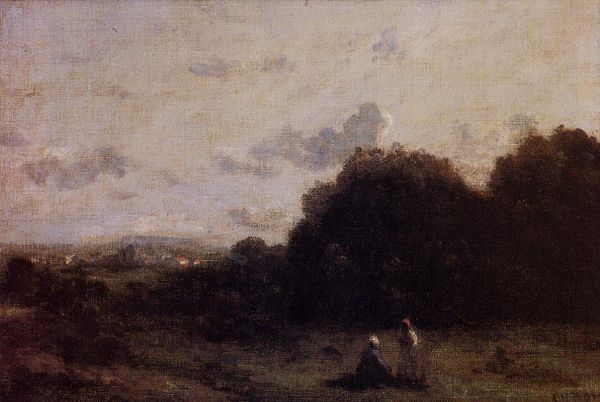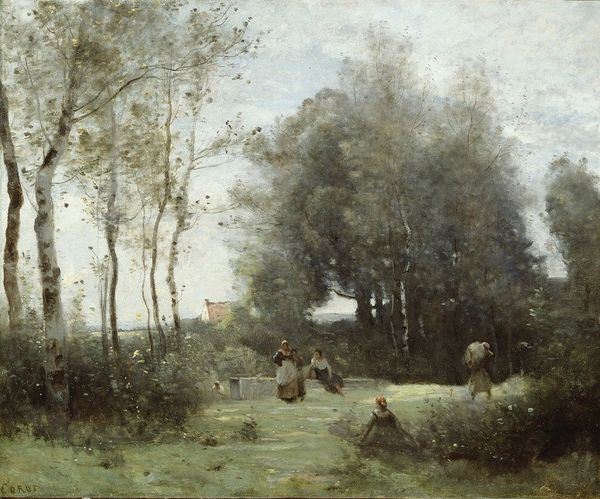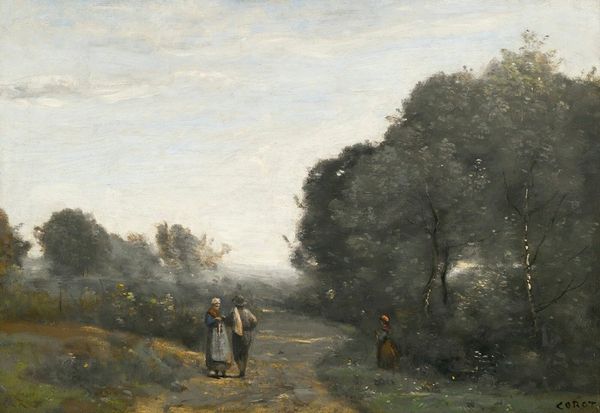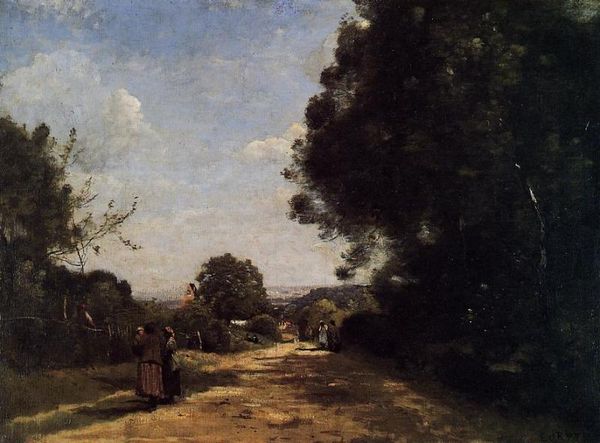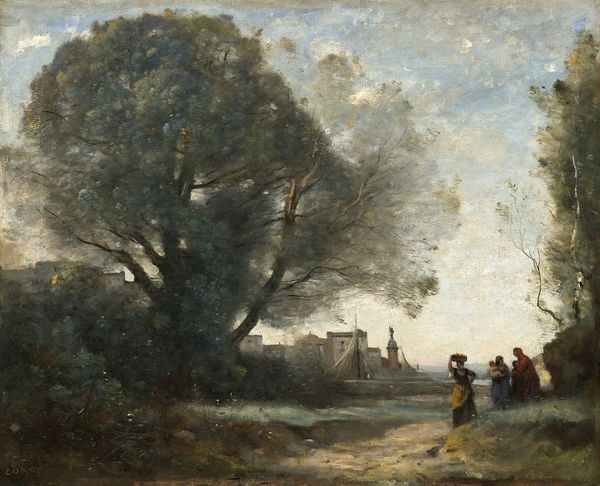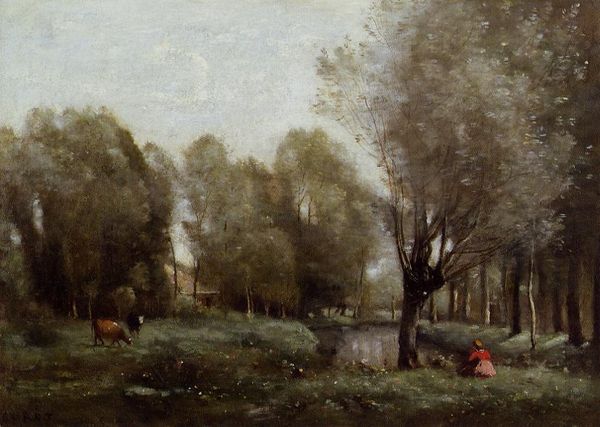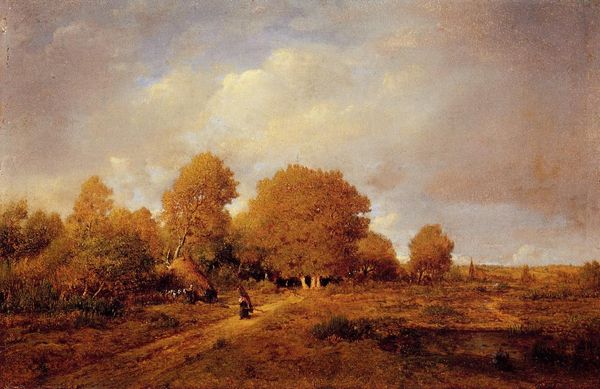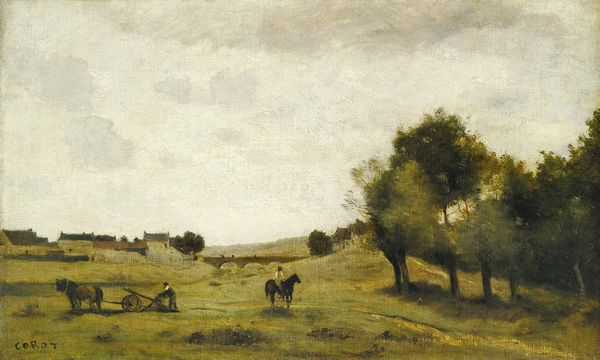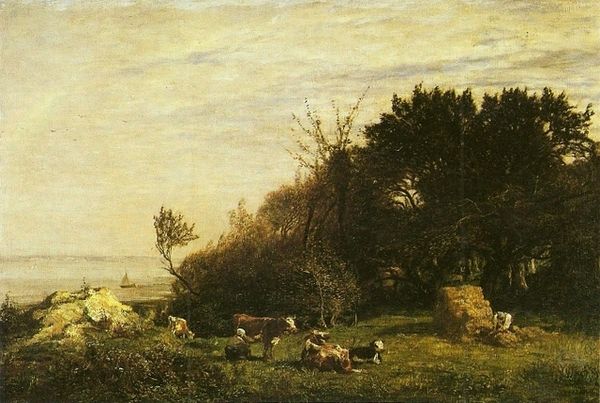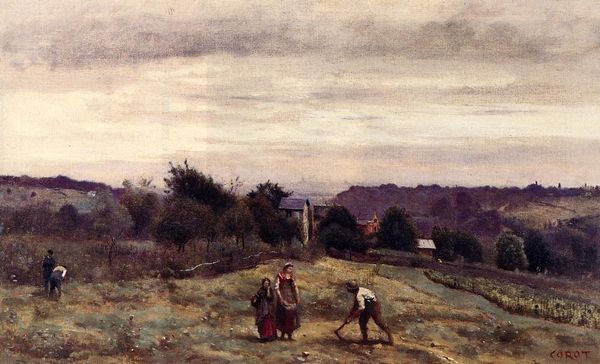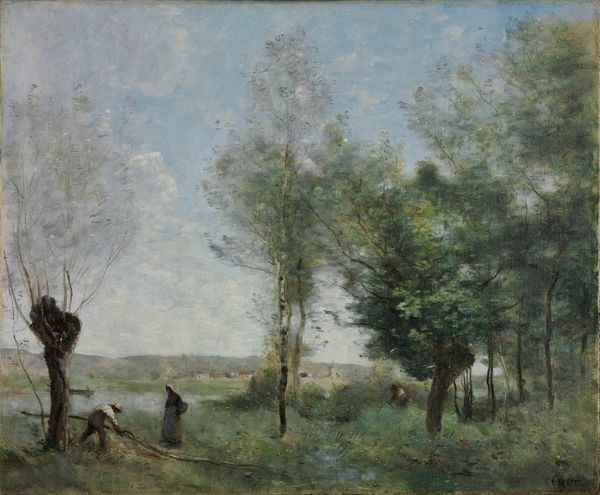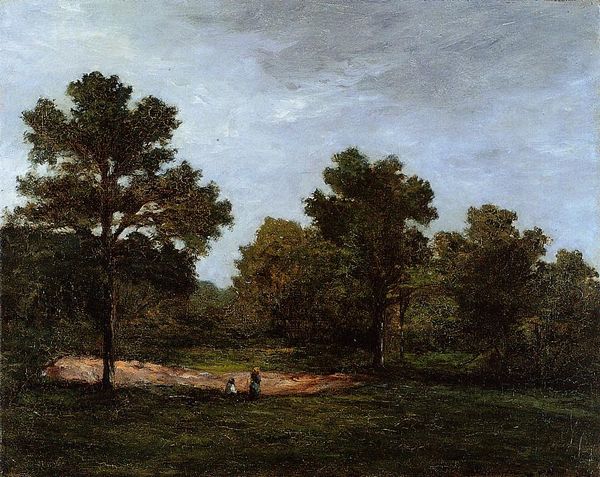
painting, plein-air, oil-paint
#
painting
#
impressionism
#
plein-air
#
oil-paint
#
landscape
#
impressionist landscape
#
oil painting
Copyright: Public domain
Curator: Looking at Camille Corot's "Outside Paris The Heights above Ville d'Avray" from 1870, painted with oils, I immediately feel a sense of gentle melancholy. The hazy atmosphere and muted tones contribute to a quiet contemplation. What stands out for you? Editor: It's fascinating how Corot situates us within the liminal space of the landscape, especially given the Franco-Prussian war. This work could almost be interpreted as an elegy for a declining aristocratic order, with its rendering of pastoral labor and quiet remove. Consider that those 'heights' literally overlook Paris—are we meant to ponder class disparities in this piece, rendered from this angle? Curator: That's a very astute point. In terms of iconography, trees have long served as a symbol of growth, connection, or, depending on their state, mortality. This particular stand of trees frames the landscape with their somewhat bare, twisting branches. Might we read something of Corot's own state of mind through this imagery of somewhat weathered, old growth and those gossamer thin new birch reaching into the heavens? Editor: It would be fruitful to examine what images from daily Parisian newspapers of that period conveyed, contrasting that with the arcadian scenes painted by Corot during a fraught time in France's history. Corot’s application of plein-air impressionism arguably softens any specific class narrative into something universal. Those figures are small and unassuming, absorbed by daily life rather than locked in revolutionary struggles. It becomes more about the eternal cycle than about 1870, specifically. Curator: True. Even so, that choice to position his composition just "outside" Paris places the artwork into a politically loaded situation. One might even interpret it as a metaphor for the way social revolution hovers at the fringes. Do the subdued earth tones suggest something of the anxieties experienced? Or am I reaching too far? Editor: Not at all, I find your perspective stimulating. When we look at art from the past through the lens of contemporary issues, like gender equality and access to power, it pushes us to unpack potential gendered or other class dimensions present at that historical juncture, thereby allowing viewers a way into understanding that sociopolitical history. It isn't merely a landscape, in the end. Curator: Exactly. Through our discussion, a deeper narrative unfolds – one that allows us to interpret it through multiple contexts: socio-political circumstances, and its artistic merit.
Comments
No comments
Be the first to comment and join the conversation on the ultimate creative platform.
